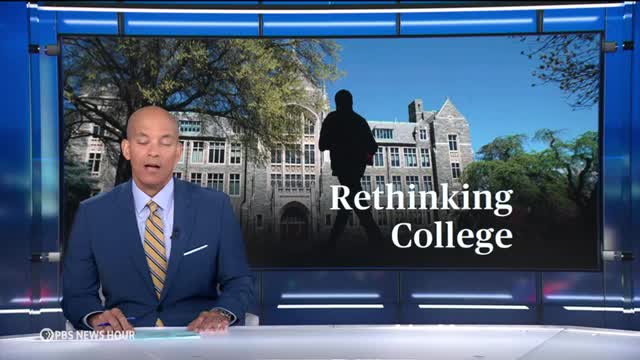Colleges face enrollment shifts after affirmative action ruling
This article was created by AI summarizing key points discussed. AI makes mistakes, so for full details and context, please refer to the video of the full meeting. Please report any errors so we can fix them. Report an error »

In the wake of the U.S. Supreme Court's decision to overturn affirmative action, colleges and universities are revealing the racial demographics of their first incoming classes, highlighting significant variations in enrollment trends across institutions. Notably, many prestigious schools, including Columbia University, MIT, and Amherst College, have reported declines in the percentage of Black students, while others like Georgetown and Dartmouth have maintained stable or slightly increased numbers.
David Leonhardt from the New York Times discussed these trends, noting that the overall share of Black students at a typical college has dropped from approximately 12% to around 10.3%. In contrast, Asian American enrollment has seen a slight uptick, although the increase may be understated due to a rise in students opting not to disclose their race—an option that some believe Asian students may be more likely to choose following the Supreme Court ruling.
Leonhardt emphasized the importance of examining economic diversity alongside racial diversity, pointing out that while racial inequities are significant, economic disparities also play a crucial role in college admissions. Historically, many selective colleges have achieved racial diversity but have predominantly enrolled upper-middle-class or affluent students. With the ban on race-based affirmative action, some institutions are now focusing on economic affirmative action to recruit a more economically diverse student body.
Looking ahead, Leonhardt highlighted the need to monitor how these trends evolve over the coming years. He referenced California's experience after it eliminated race-based affirmative action 30 years ago, where initial declines in Black student populations at some schools eventually stabilized as institutions adapted their recruitment strategies. The future of diversity at schools like Columbia and MIT remains uncertain, as they seek to address the recent declines while adhering to legal constraints.
David Leonhardt from the New York Times discussed these trends, noting that the overall share of Black students at a typical college has dropped from approximately 12% to around 10.3%. In contrast, Asian American enrollment has seen a slight uptick, although the increase may be understated due to a rise in students opting not to disclose their race—an option that some believe Asian students may be more likely to choose following the Supreme Court ruling.
Leonhardt emphasized the importance of examining economic diversity alongside racial diversity, pointing out that while racial inequities are significant, economic disparities also play a crucial role in college admissions. Historically, many selective colleges have achieved racial diversity but have predominantly enrolled upper-middle-class or affluent students. With the ban on race-based affirmative action, some institutions are now focusing on economic affirmative action to recruit a more economically diverse student body.
Looking ahead, Leonhardt highlighted the need to monitor how these trends evolve over the coming years. He referenced California's experience after it eliminated race-based affirmative action 30 years ago, where initial declines in Black student populations at some schools eventually stabilized as institutions adapted their recruitment strategies. The future of diversity at schools like Columbia and MIT remains uncertain, as they seek to address the recent declines while adhering to legal constraints.
View full meeting
This article is based on a recent meeting—watch the full video and explore the complete transcript for deeper insights into the discussion.
View full meeting